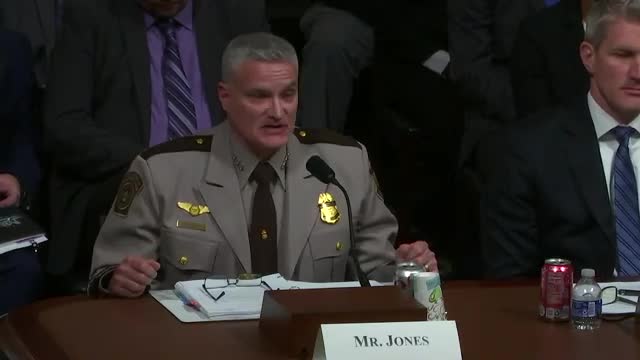Border officials confront drone surveillance challenges as cartels exploit technology for trafficking
December 31, 2024 | Homeland Security: House Committee, Standing Committees - House & Senate, Congressional Hearings Compilation
This article was created by AI summarizing key points discussed. AI makes mistakes, so for full details and context, please refer to the video of the full meeting. Please report any errors so we can fix them. Report an error »

In a recent meeting of the U.S. House Committee on Homeland Security, lawmakers addressed the growing threat posed by unmanned aerial systems (UAS), particularly in relation to border security and drug trafficking. The discussions highlighted the challenges law enforcement faces as cartels increasingly utilize drones for surveillance and potential contraband transport.
The meeting underscored the evolving landscape of drone technology, with officials noting that cartels are using drones to monitor law enforcement activities continuously. This countersurveillance capability complicates efforts to mitigate illegal activities along the southern border. Officials reported that while there were approximately 45,000 detections of drones last year, only a small fraction—about 5%—resulted in actual incursions into U.S. airspace. The limited number of mitigations, with only 60 actions taken in fiscal year 2024, raised questions about the effectiveness of current strategies and the criteria used for intervention.
One significant point of discussion was the potential for drones to transport narcotics, particularly fentanyl. While officials confirmed that smaller quantities of other drugs have been moved via drones, they indicated that the payload capacity makes it less efficient for cartels to use drones for larger shipments. The conversation also touched on the broader implications of drone technology, including concerns about its origins, as many drones are manufactured in China, raising fears about potential surveillance by foreign entities.
The committee also explored the need for expanded authorities for state and local agencies to address drone threats at large public events. With the increasing frequency of such events, the current federal coverage is insufficient. Lawmakers emphasized the importance of training for local authorities to distinguish between legitimate drone use and potential threats.
As the meeting concluded, concerns about the future of drone technology were raised, particularly regarding the integration of artificial intelligence. Officials acknowledged that traditional mitigation techniques may not be effective against AI-operated drones, prompting discussions about the need for advanced counter-drone capabilities.
Overall, the meeting highlighted the urgent need for a comprehensive strategy to address the multifaceted challenges posed by drones, particularly in the context of national security and public safety. As lawmakers continue to grapple with these issues, the implications for border security and law enforcement remain significant, necessitating ongoing dialogue and action.
The meeting underscored the evolving landscape of drone technology, with officials noting that cartels are using drones to monitor law enforcement activities continuously. This countersurveillance capability complicates efforts to mitigate illegal activities along the southern border. Officials reported that while there were approximately 45,000 detections of drones last year, only a small fraction—about 5%—resulted in actual incursions into U.S. airspace. The limited number of mitigations, with only 60 actions taken in fiscal year 2024, raised questions about the effectiveness of current strategies and the criteria used for intervention.
One significant point of discussion was the potential for drones to transport narcotics, particularly fentanyl. While officials confirmed that smaller quantities of other drugs have been moved via drones, they indicated that the payload capacity makes it less efficient for cartels to use drones for larger shipments. The conversation also touched on the broader implications of drone technology, including concerns about its origins, as many drones are manufactured in China, raising fears about potential surveillance by foreign entities.
The committee also explored the need for expanded authorities for state and local agencies to address drone threats at large public events. With the increasing frequency of such events, the current federal coverage is insufficient. Lawmakers emphasized the importance of training for local authorities to distinguish between legitimate drone use and potential threats.
As the meeting concluded, concerns about the future of drone technology were raised, particularly regarding the integration of artificial intelligence. Officials acknowledged that traditional mitigation techniques may not be effective against AI-operated drones, prompting discussions about the need for advanced counter-drone capabilities.
Overall, the meeting highlighted the urgent need for a comprehensive strategy to address the multifaceted challenges posed by drones, particularly in the context of national security and public safety. As lawmakers continue to grapple with these issues, the implications for border security and law enforcement remain significant, necessitating ongoing dialogue and action.
View full meeting
This article is based on a recent meeting—watch the full video and explore the complete transcript for deeper insights into the discussion.
View full meeting